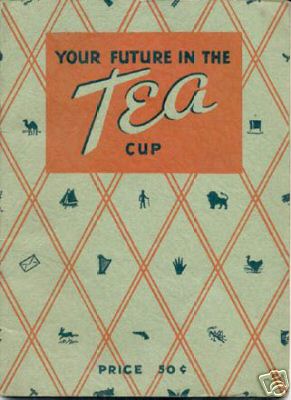Tea Company Booklets
From Mystic Tea Room
From the 1920s through the 1960s is was quite common for manufacturers of all sorts of goods, from cocoa powder and mayonnaise to oil filters and art supplies, to issue small booklets describing their products. Sometimes prices were included, and a booklet would take on double duty as a catalogue, but more often a small price list and a return mail envelope were included separately, which allowed the booklet to be used for years without having to be updated to reflect changes in pricing.
Contents |
20th Century Product Ephemera
The smaller booklets might also be bulk-shipped to wholesalers, who distributed them to retailers, who in turn set them out in specially-marked shelf-hanger pockets or counter-top easel stands where the goods were sold and the customers could take one if desired.
Typically these booklets were printed on glossy paper, often with beautiful full-colour covers and classical sho-card lettering. The interiors might be in full colour as well, or they might feature line art with spot colour. Advertising copy writers researched and wrote these booklets, and in some cases were allowed to attach their names as authors. The typical page length was 16 pages, with smaller companies opting for mere tri-fold brochures and larger ones going as far as 32 pages per booklet.
The general idea behind most such booklets, especially in the culinary industries, was to intrigue and captivate the retail purchaser with interesting facts and practical advice on product usage, and thus to build brand loyalty. My mother, Liselotte Erlanger Glozer, who catalogued many such pamphlets that were distributed with California agricultural products used to jokingly call the two forms of writing "The Romance, Lure, and Lore of Raisins" and "50 Ways to Use Only This Product." Some booklets combined both approaches — the "Romance" in the opening pages and the recipes in the second part.
The "Romance" booklets resembled friendly encyclopedia articles. In broad historical strokes they described the first use of the product in pre-history or early history; its importation from tropical climes,if applicable; and the wonderful modern era of sanitary packaging and rapid rail shipment that assured quality and freshness.
The "50 Ways" booklets presented recipes or, in the case of multiple-use goods such as baking soda, they might combine recipes with household management tips and tricks. In the case of products from which a plethora of recipes could not be invented — such as tea — the authors looked for additional ways to use the product, and that brings us the answer to the unspoken question, "Why did tea companies publish booklets on tea leaf reading?
Tea Booklets from Tea Companies
When it came to "Romance" booklets about tea, the Salada Tea Company of Boston, Toronto, and Montreal, had all the other companies whipped. The lushest booklet they published was "The Story of the Tea Plant," complete with maps, photographs of the artwork that enriched the Salada Tea Building (including several Buddhas and a matched pair of 7 feet tall cloisonne foo dogs), and the multiple plate-glass storage units that each held 1/1/4 tons of tea. The raciest Salada booklet was"The Truth about Orange Pekoe," whose provocative title resolved, upon reading, to be a short, cheerful encyclopedia article on how tea is grown and graded.
Tea Leaf Reading Booklets from Tea Companies
Instruction booklets about tea leaf reading were issued by a number of tea companies from the 1920s through the 1960s. They were either packed into boxes of tea or the customer sent in a proof-of-purchase coupon and a mall amount of money to cover the postage and received the booklet by return mail.
Booklets Accompanying Tea Sets from Tea Companies
Occasionally during the era from the 1920s through the 1960s, tea companies offered marked fortune telling cup and saucer sets as premiums packed within their larger boxes of tea, or as side-sales for which the customer sent in a proof-of-purchase coupon and a mall amount of money to cover the cost of the goods and postage. As far as i can tell, all such sets were marked for fortune telling, all came with an instruction booklet, and all the booklets referred primarily to the marked sets.





